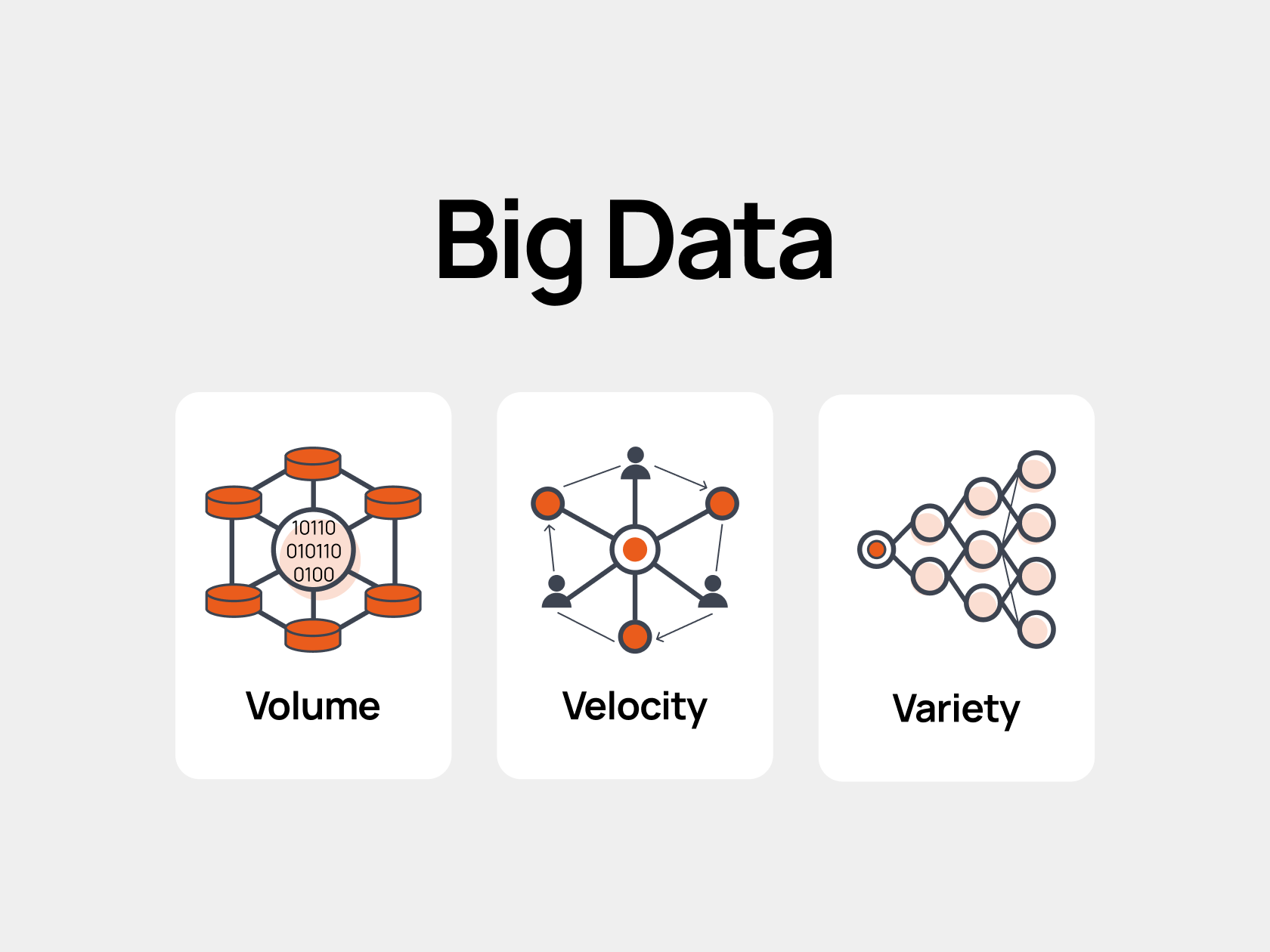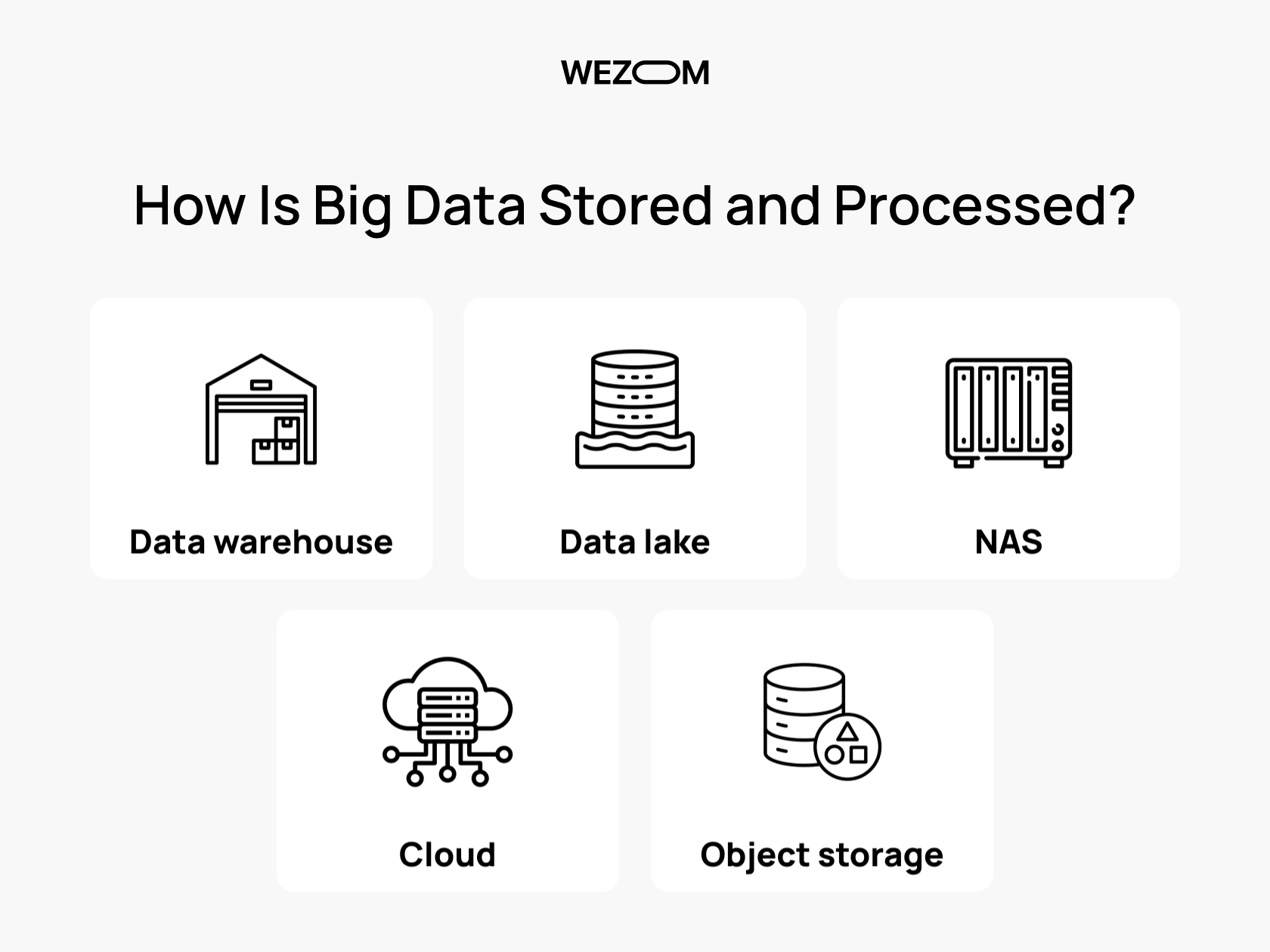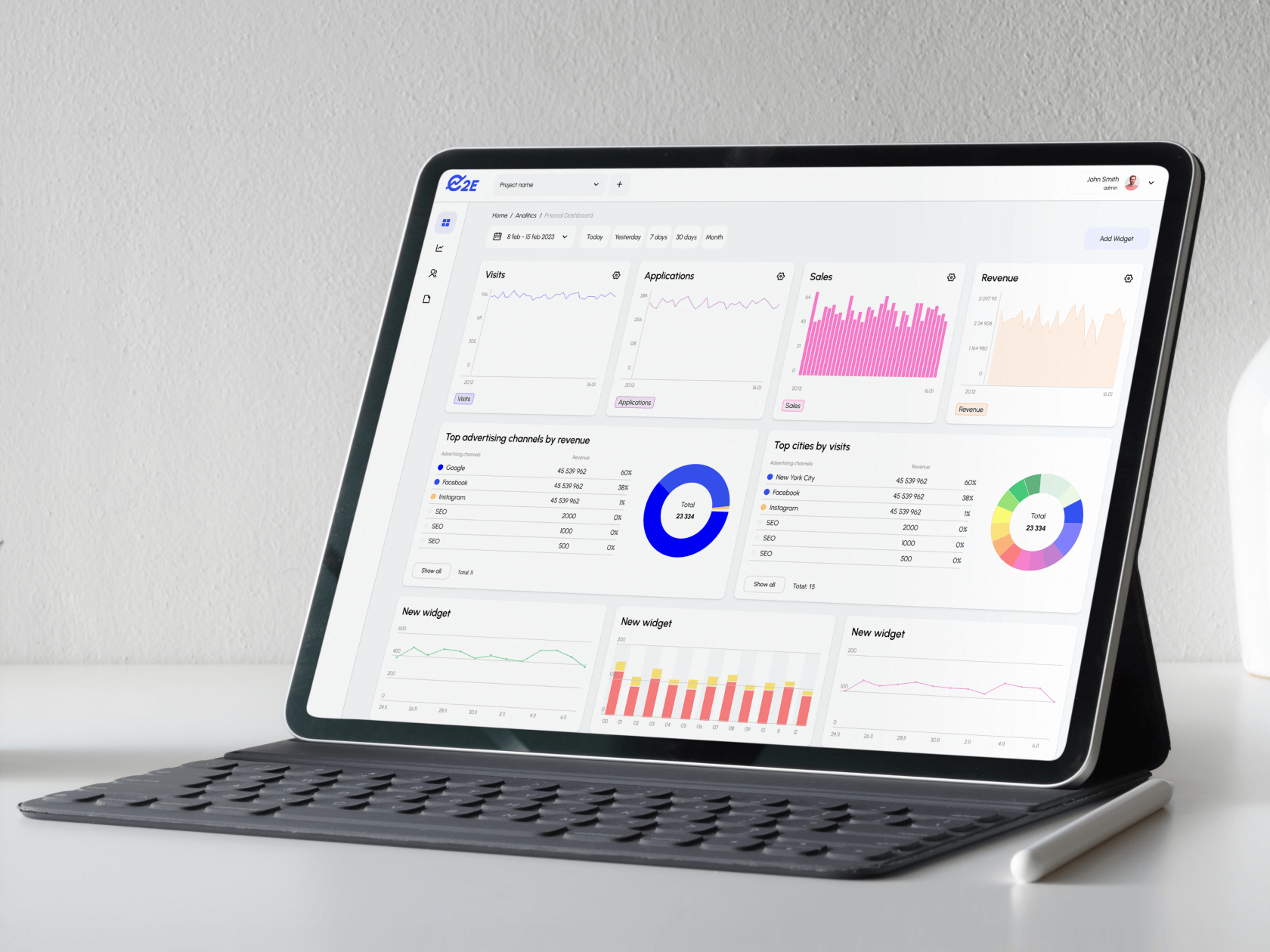In 2023, the global big data market was estimated at $307.52 billion and is expected to grow gradually in the next ten years. 3 in 5 companies deploy big data-driven solutions as a part of their digital transformation. But why is this tech concept so promising?
Key takeaways
- Nowadays, big data is one of the key drives for businesses that need immediate reaction to fast-changing trends or events typical to a specific workflow;
- Big data can be used to get a comprehensive picture of the current state of a business and receive unobvious insights from analytics based on it;
- You can use big data solutions to build both short- and long-term business strategies led by the relevant information about all your workflows.
We all know that one of the main factors determining the competitiveness of the vast majority of businesses is the speed of response, both to general market trends and to specific situations that they may encounter every day. And the standard way to achieve this speed is the implementation of big data solutions that can independently process colossal flows of information in real time and generate useful insights based on it.
Below, we will delve deeper into the topic of the importance of big data in business and uncover the value of this technology concept in general.
What Is Big Data?
Big data is data of large volumes and different types transferred to a centralized software solution at high speed (usually in real time). Moreover, such data is often collected from disparate sources, which entails the need to use special standardization, ordering, and filtering algorithms. Speaking in numbers, currently, big data means anything larger than 8 GB, that is, the standard size of PC RAM.
But why is big data a separate concept and cannot be referred to by the well-known term, database? The fact is that, unlike a database, in relation to big data, we can apply the 3V indicator: volume, velocity, and variety. Thus, standard scenarios that work well for databases cannot be applied to big data.

The Importance of Big Data in Business
In general, there is no one-size-fits-all answer to the question: “How do companies use big data?” Indeed, each business niche and company may have its own ways of using big data to benefit from it, but there is still a common reason that unites them in need to apply it: this technology concept is aimed at freeing up human resources, allowing for greater speed, accuracy, and efficiency in the processing of large amounts of information.
In particular, companies can use big data solutions to generate analytical reports, predict important trends, and even delegate the role of smart assistants to help identify patterns that can be difficult to find with a traditional manual approach.
It is also essential to note that the concept of big data is rarely used independently and is usually part of solutions based on IoT, artificial intelligence, machine learning, cloud computing, etc.
Challenges in Implementing Big Data
Along with the undeniable usefulness of big data solutions, you should consider the challenges that you risk encountering during their implementation and/or deployment.

Data source management
Every company planning to implement a big data solution must pay special attention to organizing processes to manage the sources where this big data comes from. In particular, for this purpose, a complex architecture has to be created – it should allow distributing streams with big data, as well as filtering, organizing, and structuring it so that the solution based on it could deal with accurate, high-quality, and well-prepared information.
Ensuring the proper level of security
Often, due to the large number of big data sources, companies that do not have policies in place to protect confidential information face problems related to legislation protecting its original owners. To do this, in addition to implementing a number of standards such as PCI DSS, HIPAA, and GDPR, companies must also strengthen their general internal and external security measures to minimize the risks of inadvertent data leakage.
Formation of the knowledge base necessary for effective work with big data solutions
Many companies face a high entry threshold that accompanies the deployment of big data-based solutions. This is not always associated with the complexity of user interfaces – often, employees get used to working with a software fleet that has long been adopted in a particular company, and the introduction of a new software product turns out to be a stressful event for them. To minimize these risks, companies should devote their resources to training their personnel, as well as building a knowledge base with answers to questions related to the use of new software.
Financing
Custom development of big data solutions can require significant investment. In this regard, many businesses have to look for approaches to save their resources without shortening the list of tasks assigned to such software. In particular, in their development, they can use ready-made platforms, tailoring them to their individual tasks and processes.
How Is Big Data Stored and Processed?
There are several common ways to store big data. Let's look at them below.

Data warehouse
Data warehouses are used to unify disparate data sources and are often part of analytics solutions. Formally, they are divided into three types:
- Enterprise Data Warehouse (EDW) – centralized repositories that provide businesses with a unified approach to organizing and presenting data and also ensure extensive opportunities to differentiate access rights to this data;
- Operational Data Store (ODS) – it is a type of storage that provides real-time access to data and is often used to streamline routine operations;
- Data mart – it is designed for use in a specific business process, be it financial management, sales, transaction processing, or something else.
Ultimately, the choice of a specific type of data drive depends on the specific tasks assigned to your big data driven software.
Data lake
A data lake is a centralized pool of data that contains information from disparate sources in its raw format. This does not mean that all the data here is unstructured – it can be pre-prepared for subsequent application directly in the resource itself or in some specialized middleware. At the same time, using a data lake gives companies the flexibility to reuse this data across multiple big data solutions or individual processes that they run.
NAS
Network Attached Storage (NAS) is a physical device that allows the use of data for companies or their individual employees via an Internet connection. Such devices are based on high-performance processors and have special firmware that implies sharing access to data and sending it to points of use in real time.
Cloud
Another popular way to store big data is the cloud. With the help of cloud platforms, data is localized on the Internet (to be more precise, on the servers of cloud vendors such as Google, Amazon, Microsoft, etc.), and access to it is carried out by obtaining the appropriate rights. This approach ensures comprehensive data availability regardless of the memory capacity of the device that uses it.
Object storage
Finally, you can also use object storage, in which data is perceived as objects with its specific metadata and hierarchy. Such storages are localized on several physical devices and do not imply division into separate files and/or folders. To access data from object storage, they use TCP/IP protocols. As for the physical access layer, communication between devices is implemented through HTTP and REST APIs.

How Big Data Analytics Works
Since one of the most common use cases for big data is analytics, it is crucial to understand how this concept works in analytics solutions.
In particular, big data helps companies identify trends, patterns, and correlations in large volumes of unstructured information and, based on these insights, make data-informed decisions. From a technical point of view, analytical solutions often require the implementation of clustering and regression algorithms, which greatly simplifies the handling of large flows of information in real time.
The Human Side of Big Data Management and Analytics
Along with the colossal opportunities that analytical big data solutions open up for companies, their owners must take into account the fact that even the most highly intelligent software still needs human supervision.
That is why, with the implementation of such solutions, it is mandatory to have specialists who can configure and manage it in accordance with the tasks assigned to it. Moreover, these specialists must be able to interact with all departments that generate or consume big data. Only such an approach allows companies to achieve success and make the most out of the value of big data.
Our Case Studies of Implementing Big Data for Business Growth
Now, we propose to consider a special case of implementing a SaaS solution for end-to-end analytics. In particular, due to the tightening of policies related to the use of consumer data in the EU and the ban on the use of personal data from Client ID in certain regions, we decided to create an end-to-end SaaS solution that provides businesses with real-time analytics. In general, our global task was to create a worthy alternative to such popular services as Roistat and OWOX, ensuring its compliance with the updated rules dedicated to the privacy of personal data.

As for the functionality of our big data business solution, it had to allow its users to analyze conversion channels and the level of demand for each of them separately. At the same time, analytical insights had to be built on the basis of Google Analytics but without being linked to an email account. We also set a goal to make our solution suitable for teamwork – that’s why it also had to have the ability to share obtained insights and set up access rights to them.
After meticulous research, we divided all potential users of our solution into three groups:
- small and medium-sized businesses;
- advertising agencies;
- individual marketing experts.
This meant that the functionality of our product had to cover the tasks that specialists in social media marketing, email marketing, search engine marketing, affiliate marketing, content marketing, and web and mobile analytics regularly face.
As a result, our team first developed and launched an MVP with seamless integration with AMO CRM, differentiated access rights, and the ability to generate reports from Google Analytics and use them for advertising, audience targeting, and boosting conversions. In the future, we are going to enrich this SaaS with analytics for social media channels, analytics for affiliate programs, and other types of analytics.
As for an MVP, which is already actively used by many businesses worldwide, it allowed them to reduce marketing costs by 12% in comparison with other ready-made subscription-based analytical services.
Choose the Right Developer for Your Big Data Analytics Project
Now you know how to use big data in business and all the benefits and pitfalls that can accompany the implementation of such solutions in general. If you want to maximize the former and eliminate the latter, you should wisely choose a software development company to develop a big data-driven solution tailored to your unique business needs.
For example, you can always contact us. We have extensive experience in planning, developing, implementing, and maintaining big data applications in business – that’s why we are confident that we can create a cost-effective and scalable solution to improve your KPIs for your company, too.
